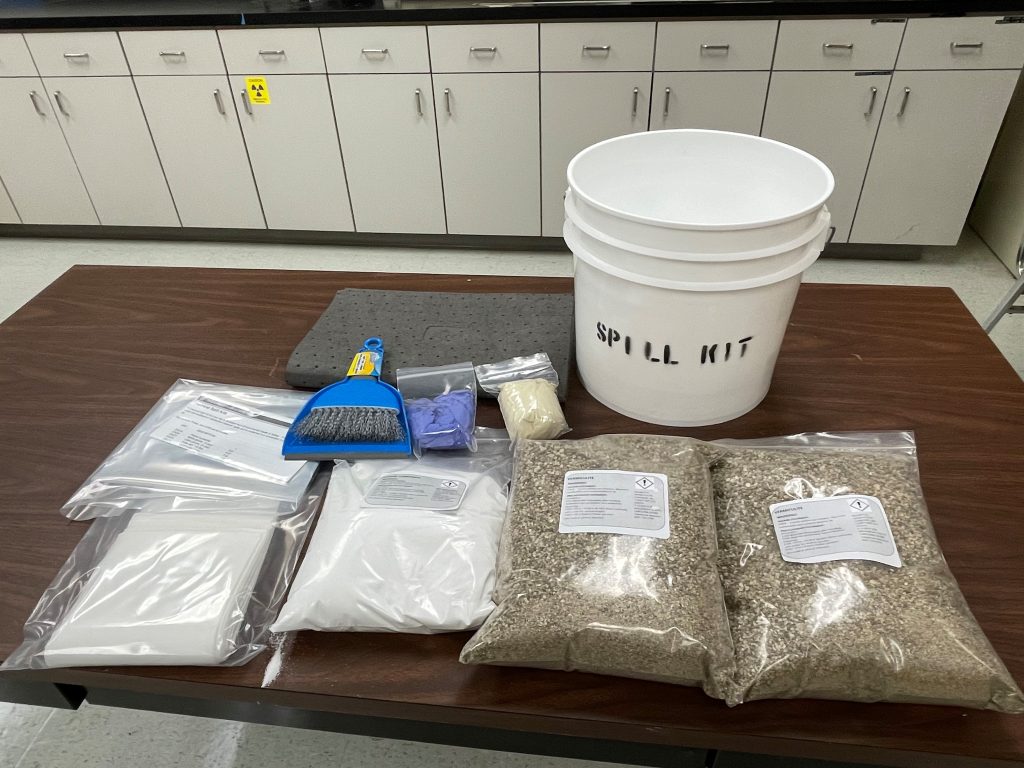
Chemical Spill Kits
Chemical Spill Kits
Workplaces which utilize hazardous materials or chemicals of any kind must have procedures in place to deal with dangerous situations such as spills or chemical exposures. Developing these procedures in advance can greatly reduce the risk of personnel injury while ensuring maximum safety for all laboratory workers. Laboratory staff members should clean up only small, incidental spills that constitute a minimum hazard. Large chemical spills or events where chemicals may be released to the environment must be handled by EH&S and UPD.
All labs that use or store chemicals shall maintain spill control materials in the event of a liquid chemical release. Although spill control depends on the types of chemicals found stored in a lab, the following list of possible spill kit items is offered as a general guideline:

- Neutralizing agents such as sodium carbonate, sodium bicarbonate, or sodium bisulfate, and
- Inert absorbents such as kitty litter or vermiculite. Caution should be exercised if rags and sponges are used as some chemicals may ignite upon contact with them.
- Vacuum line, flask and needle-nose pipette, and trap for mercury spills (if mercury is present in the lab).
- Personal protective equipment (gloves, goggles, aprons, etc.) for the person(s) collecting the spilled material.
- Waste disposal forms and labels, bags, a high-density polyethylene bucket and a small shovel for collection of spill clean-up materials prior to disposal with EH&S.
Commercial spill kits including instructions, absorbents, neutralizers, and protective equipment can be purchased through a commercial laboratory supply company.
Additionally, spill kits are available for ordering through EH&S using the Spill Kit Order Form.
Click below for spill response information:
